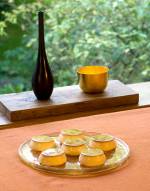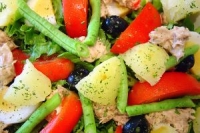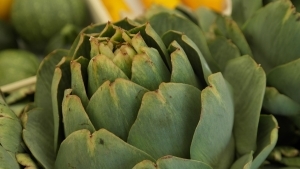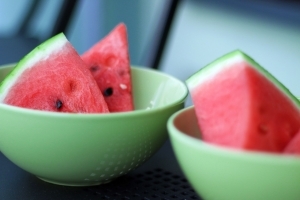Crème Caramel from Louise Hillary
If you don’t relish the slight risk of curdling that making a custard in a saucepan or double boiler entails, then make a baked custard instead and relax – baked custards can’t curdle and will emerge from their moulds smooth and faultless. Baked custard is usually served cold, and if you cook it in a mould lined with caramelised sugar, a delicious sauce will surround the custard when you turn it out. Caramel custard or Crème Caramel has both French and English roots and is a popular dessert in New Zealand cookery books. Here is a very simple version contributed by Louise Hillary to Plain and Fancy Fare, an Auckland cookbook produced around 1970 to raise funds for an assembly hall at Epsom Primary School. I have increased the amount of caramel to make lining the moulds a little easier.
Ingredients
Caramel
- ½ cup sugar (100 g)
- 3 tbsp water
Custard
- 6 egg yolks
- 1 pint / 600ml full-cream milk or milk and cream
- 1 tbsp sugar
Getting ready
Have ready 4 x ¼ pint/150 ml heatproof custard cups and an oven dish into which they fit snugly. If you prefer you could bake the custard in a single larger dish which should hold 1 pint/600 ml. Preheat the oven to 325°F/160°C.
Making the caramel
Put the sugar and water for the caramel into a heavy pan and set over gentle heat to melt, shaking the pan occasionally. When the sugar has turned to a rich, dark, but not burnt caramel, carefully pour a little into each cup (or single ovenproof dish), then tilt the cups around to spread the caramel over the base. Set aside.
Making and cooking the custard
Beat together the egg yolks, milk and sugar until well combined, but not frothy. Strain the mixture into a jug and pour it into the moulds or mould.
Set the custards in the oven dish, pour hot water around to come halfway up the sides of the cups, then lift the whole assembly carefully into the oven and bake for 30–40 minutes (or about an hour for a larger custard) until just set, but still slightly wobbly in the centre. Lift them out, cool on a rack and refrigerate until completely chilled (at least 2–3 hours). Overnight is best, as the caramel has time to become liquid again and you end up with more sauce.
To serve the custards, loosen the edges with a round-bladed knife and invert onto individual plates or a larger serving plate and take to the table. Each shining, gold-topped custard will be resting in a pool of thin caramel. Simplicity itself.
Or try Roger’s Coconut Crème Caramel...
My friend Roger Blackley replaces the water in the caramel with lime juice, then makes the custard with a mixture of cream, milk and tinned coconut cream, flavoured with a pinch of ground cardamom. This is superb.
Reprinted with permission from What’s For Pudding? published by Penguin NZ


